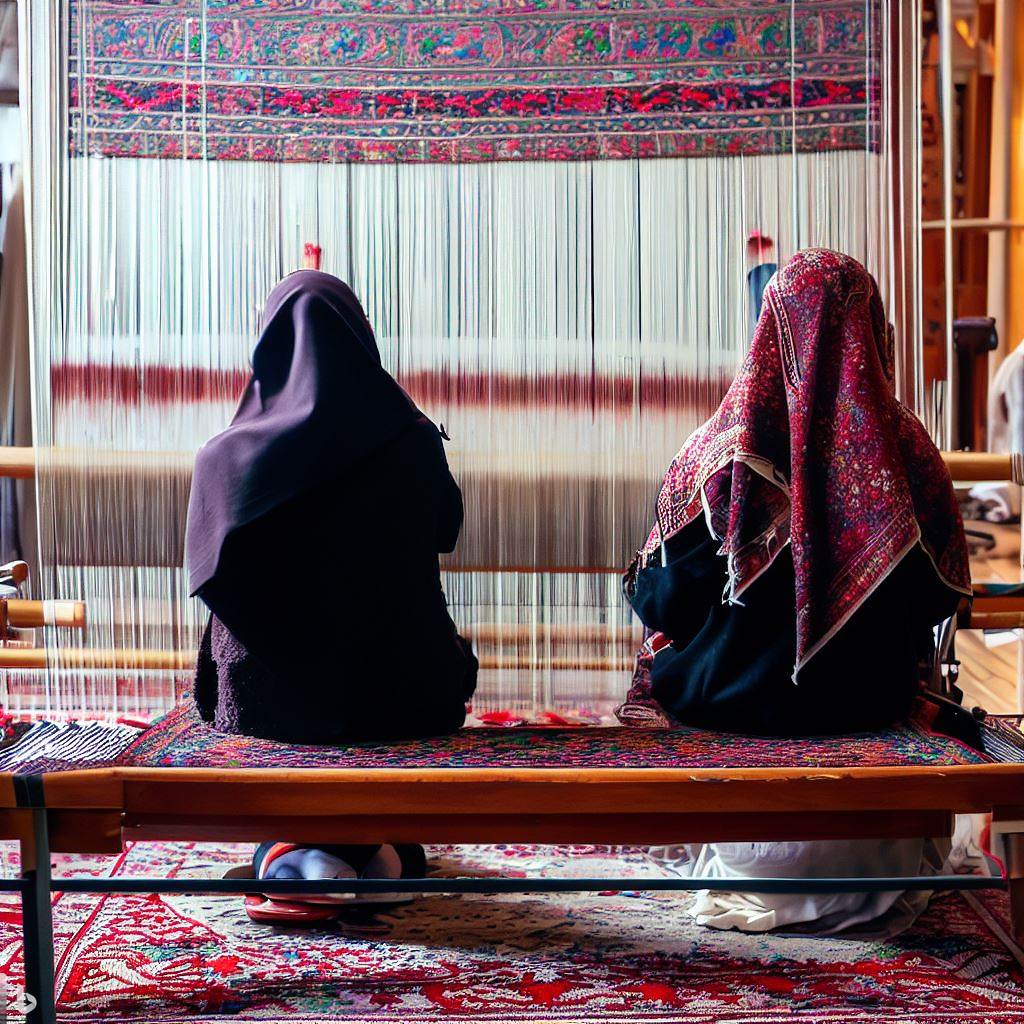Rug Weaving Beyond Borders: Embracing Global Textile Expressions
Appreciating Regional Styles and Techniques
Rug weaving traditions worldwide showcase incredible diversity tailored to local cultures and environments. Distinct techniques, materials, and motifs reveal artistry evolving in situ.
Intricately detailed Persian rugs glow with jewel tones on silk. Coarse black and white Anatolian kilims pair utility with graphic flair. Handspun Navajo wool bears symbols linking past and future.
Mayan artists use pre-Columbian backstrap looms to weave cotton depictions of ancient cosmology. Scandinavian ryijys pass down family histories in warm shaggy piles. Traditional methods speak volumes about heritage.
Understanding unique regional expressions fosters intercultural respect. Common ground emerges through celebrating rug making’s varied incarnations.
Learning Legacies Through Travel and Exchange
Many weavers seeking to expand their perspectives find immersive workshops the ideal way to experience cherished techniques and traditions outside their own. The hands-on engagement facilitates deep sharing.
Traveling to source communities lets weavers learn distinct methods in their authentic contexts from elders. The hospitality welcomes curious respectful outsiders to the family loom.
Inverse visits from artisans to demonstrate foreign practices in new settings also build bridges. Demonstrations give comprehensive insight into tools, materials, and significance.
These reciprocal exchanges weave bonds that uplift rug making worldwide. Returning home with expanded knowledge of diverse creative legacies inspires innovation within one’s own.
Incorporating New Traditions With Existing Ones
After discovering captivating out-of-culture techniques, weavers often feel compelled to honor them by fusing with native methods in fresh hybrids. The blend enriches both forms.
For example, a Scandinavian artisan might add Kilim motifs within traditional ryijy shag pile blankets. Or a Zapotec weaver could incorporate Navajo-inspired geometrics on backstrap loom cotton rugs.
This fusion approach keeps rug making arts thriving. Traditions remain living arts, not ossified museum pieces, through absorbing new perspectives. The flexibility strengthens all heritages.
With sensitivity and skill, weavers innovate synergistic expressions that pay homage across cultures. Their rugs become bridges between human creativity worldwide.
Designing Rugs With Global Perspective
Many contemporary weavers take inspiration from diverse world traditions to design highly eclectic personal rug collections. Their global consciousness rejects old divisions.
For instance, a rug series may combine Alpaca pile woven in Peru, sleek Scandi minimalist shapes, and vibrant motifs referencing Henna body art. References testify to interconnectedness.
Or a single mix media rug could incorporate cowrie shells from West Africa, embroidered sari silk from India, and ombre vegetable dyes typical of East Asia. Possibilities entwine infinitely.
The joyful disregard for separating categorizations asserts rug weaving’s fundamentally collective essence. When free to explore, individual visions speak for all humanity.
Online Platforms Linking Remote Communities
The internet’s rise enables global connections between rug weaving circles separated by oceans. A world of inspiration and exchange awaits at home.
Masters share video tutorials on niche techniques that advanced weavers can implement immediately. Designers worldwide collaborate through hashtags and digital workshopping. Customer commissions transcend borders.
Virtual communities discuss challenges, innovations, and traditions across language and geography barriers more easily surmountable online. Digital access democratizes discourse.
While lacking the face-to-face immediacy of in-person cultural exchange, global networking online brings invaluable resources to isolated artisans worldwide. Technology fosters community.
Celebrating Overlapping Spiritual Traditions
Rug motifs around the world reveal profound commonalities in spiritual symbols and cosmology. Sacred designs transcend particular cultures.
Universal archetypes like the world tree, the circle of life, mandalas, celestial imagery, and geometric harmony recur across rugs from diverse artisans. Variations on central themes bind humanity.
Many weavers describe their practice as meditative, speaking to rug making’s fundamental transcendent essence. The peaceful rhythmic focus anchors each unique cultural expression.
Honoring these shared aspects reconnects today’s weavers to the oneness underlying all textile arts passed down by devoted hands across millennia. The motifs remind us humanity shares one ancient creative spirit.
Weaving in Solidarity With Marginalized Voices
In an unequal world, rug weaving offers marginalized communities a medium to assert their neglected identities and perspectives with power.
Women depict everyday realities absent from male narratives. Indigenous weavers share truths that displace prevailing colonial accounts. Minority groups celebrate their vibrant resilience through textiles.
By directly presenting their lived experiences in their own voices, these weavers gain self-determination. Their rugs dismantle unjust social hierarchies on a daily basis.
The tactile craft becomes an act of resilience. Weavers support each other’s efforts to claim space and shift cultural consciousness toward inclusivity through the language of threads and knots.
Advocating for Global Rug Preservation and Education
As global connectivity increases, so does collective responsibility to preserve all cultural rug making heritages, not just one’s own. Holistic perspective informs action.
Weavers help document and digitize disappearing practices to save knowledge. Academic and trade organizations receive encouragement to take inclusive approaches.
Exhibits get called upon to expand representation beyond a sole region or group. Children gain exposure to diverse textile arts early on. Tourism sustains remote villages’ ancient livelihoods.
Each weaver plays a role in nurturing the worldwide rug ecology. Only raising every unique voice in chorus allows the full beauty to resonate.
At its heart, rug weaving in all its splendid diversity springs from a unified source – human hands seeking beauty, function, and connection. Honoring this forges bonds that enrich and inspire global rug making traditions to mutually thrive, evolve, and uplift. The colors and symbols may differ, but the spirit endures as one.
